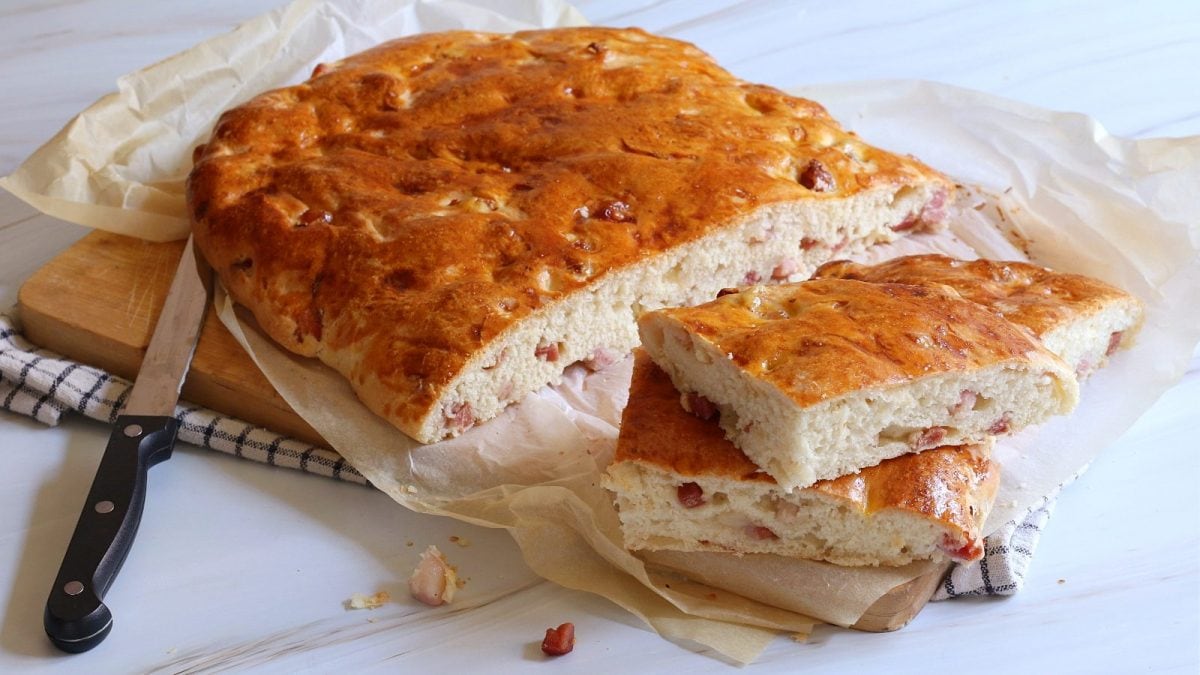
Italian Bacon Focaccia Bread (Crescente Bolognese) is a soft focaccia typical of the city of Bologna. Also known as crescente con i cicioli or crescenta, it is a very ancient preparation, born in local bakeries as a recycled recipe that used leftover bread dough along with the less noble cuts of pork, such as cracklings and ham shank. Today, it is made with a custom dough, simple to make but rich and flavorful in the end.
The name of this focaccia, which was once a baker's breakfast or lunch, derives from the dialect term "carsent," meaning "that grows." Over time, it gained popularity among the public and became a popular specialty among local bakeries. The official recipe has been registered with the Bologna Chamber of Commerce by the Italian Cuisine Association.
Freshly baked and piping hot, Italian Bacon Focaccia Bread is perfect as an aperitif, at a festive buffet, or as an accompaniment to any dinner party. The addition of lard, combined with the ham and sweet pancetta (which in our version replaces the traditional cracklings), makes this focaccia fragrant, soft, and a treat impossible to resist.
What is Italian Bacon Focaccia Bread (Crescente Bolognese)?
The Crescente Bolognese, also known as “crescente” or “crescenta,” is a traditional focaccia from Bologna and the Emilia‑Romagna region of Italy. Its name derives from the Bolognese dialect word carsent, meaning “what grows,” a nod to its origin as a baker’s use of excess leavened dough mixed with lard and leftover bits of prosciutto or bacon—originally scraps or gambuccio—to create a hearty mid‑morning snack.
After World War II, as living standards improved, bakers began using high‑quality cured meats like pancetta and prosciutto instead of scraps. Its official recipe was recognized and deposited with the Bologna Chamber of Commerce in 2013. While the Crescente remains rooted in its Italian origins, its hearty, portable nature has made it a natural fit for international appreciation—particularly in the U.S., where Italian-American bakeries and cafés have introduced similar meat-stuffed focaccias, blending timeless tradition with modern tastes.
Pro Tips for The Best Bacon Focaccia Bread
- Choose pancetta, prosciutto, or bacon with rich flavor and minimal water content to avoid a soggy texture. Cut the meat into small, uniform pieces so it distributes evenly throughout the dough and cooks properly.
- Don’t rush fermentation—allow the dough to double in size for full flavor and proper texture.
- Bake in a fully preheated oven at a high temperature (around 375–400°F / 190–200°C) for a crisp, golden crust.
- A light coating of extra virgin olive oil on top helps develop a beautiful golden crust and adds flavor.
- Let the focaccia cool slightly after baking to allow the structure to set and flavors to develop.
Can I Use Something Other Than Lard?
Yes, you can substitute lard in the dough with extra virgin olive oil or unsalted butter. While lard gives the crescente its traditional richness and tenderness, olive oil offers a lighter, slightly fruity flavor, and butter adds a mild, creamy taste. Just note that each fat will slightly change the texture and flavor of the final bread.
Why is My Focaccia So Tough?
A tough focaccia usually means the dough was overworked, not given enough time to rise, or too little fat or hydration was used. Overmixing develops too much gluten, making the bread chewy instead of tender. Make sure to let the dough rise fully and use enough lard or oil to keep it soft and moist.
Can I Add Anything Else to This Focaccia Bread?
Yes, you can customize Crescente Bolognese by adding ingredients like black olives, diced cheese (such as provolone or Parmigiano), herbs like rosemary or thyme, or even caramelized onions. These additions can enhance flavor and texture—just be careful not to overload the dough to keep its light, airy structure.
How Can I Serve This Bacon Focaccia Bread?
Crescente Bolognese, or bacon focaccia, can be served warm or at room temperature, sliced into squares or wedges. It makes a perfect appetizer, snack, or part of a charcuterie board. You can also pair it with cheeses, olives, or a fresh salad—or enjoy it as a hearty sandwich base.
Can I Make This Ahead of Time?
Yes, you can definitely make Crescente Bolognese ahead of time. Bake it a day in advance and store it wrapped at room temperature. For the best texture, reheat briefly in the oven before serving. You can also refrigerate the dough overnight for a slow rise and enhanced flavor before baking the next day.
Does It Freeze Well?
Yes, Crescente Bolognese freezes well. Once baked and cooled, wrap it tightly in foil or plastic wrap and freeze for up to 2 months. To enjoy, thaw at room temperature and reheat in a low oven to restore its warmth and slight crispiness without drying it out.
How to Store Any Leftovers
Store leftover Crescente Bolognese at room temperature, wrapped in parchment or a clean cloth to maintain its crust, for up to 2 days. For longer storage, refrigerate it in an airtight container for up to 4 days, then reheat in the oven to bring back its texture and flavor.
Ingredients
How to Make Italian Bacon Focaccia Bread

Chop the cured meats with a knife, trying to obtain fairly small pieces. Set aside.
Chop the cured meats with a knife, trying to obtain fairly small pieces. Set aside.

Dissolve the yeast in the water at room temperature.
Dissolve the yeast in the water at room temperature.

Add the sugar and mix until completely smooth.
Add the sugar and mix until completely smooth.

Pour into a large bowl containing the flour, mixing everything together with a fork.
Pour into a large bowl containing the flour, mixing everything together with a fork.
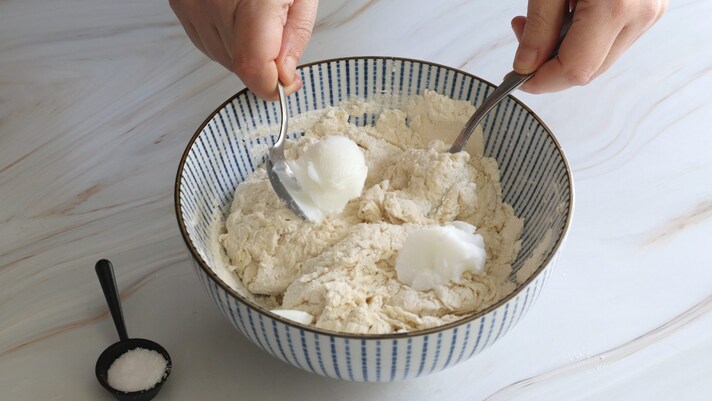
Add the lard, work the dough a little and then finish with the salt.
Add the lard, work the dough a little and then finish with the salt.
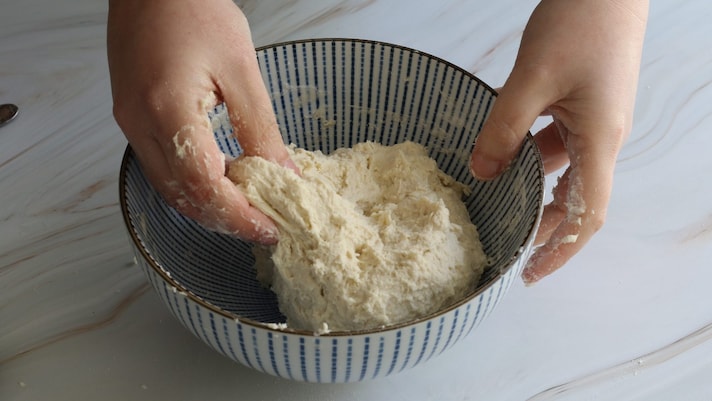
Knead with your hands trying to make the mixture uniform.
Knead with your hands trying to make the mixture uniform.
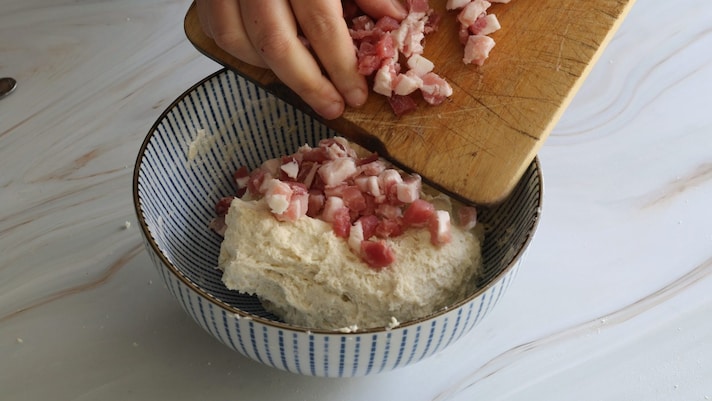
Add the cured meats and incorporate them into the dough.
Add the cured meats and incorporate them into the dough.
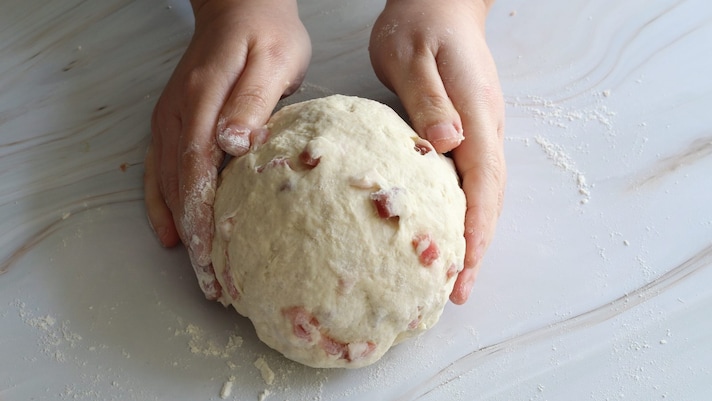
Transfer to a work surface and fold the dough over itself repeatedly. Finally, shape it into a ball and let it rise for about 2 hours.
Transfer to a work surface and fold the dough over itself repeatedly. Finally, shape it into a ball and let it rise for about 2 hours.
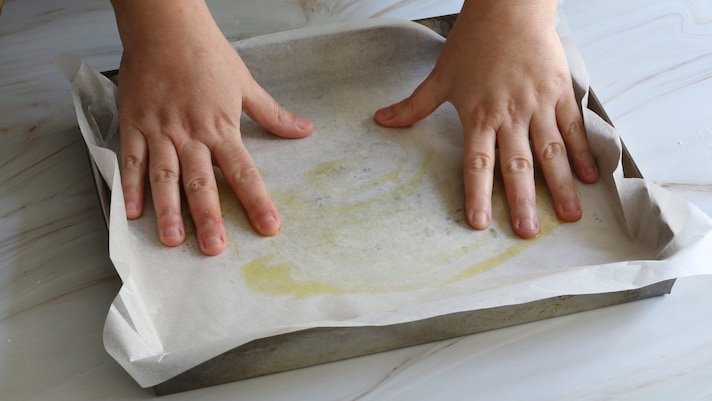
Take a baking tray of approximately 30x40cm, line it with baking paper and grease the base well with your hands.
Take a baking tray of approximately 30x40cm, line it with baking paper and grease the base well with your hands.
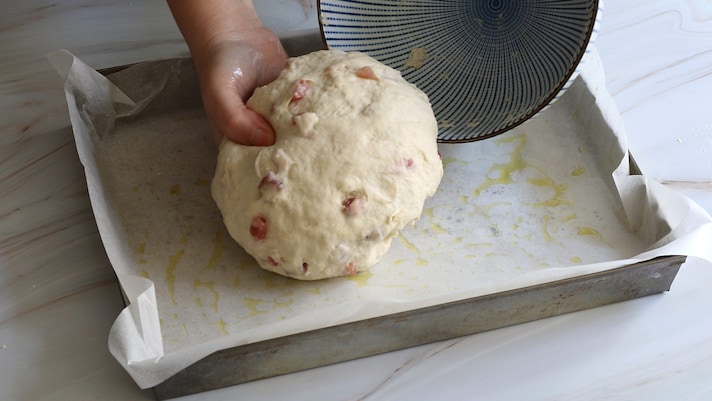
Take the risen dough and transfer it to the greased baking tray. Then let it rest for another 10 minutes.
Take the risen dough and transfer it to the greased baking tray. Then let it rest for another 10 minutes.
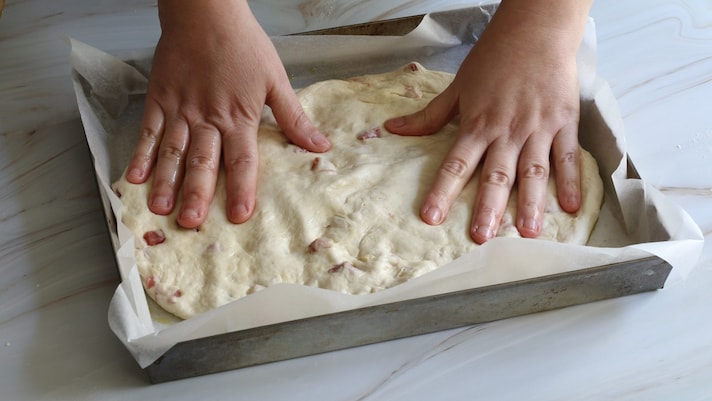
Roll out the focaccia with greased hands to form an oval. Cover with cling film and let rise for about 40 minutes in a sheltered place.
Roll out the focaccia with greased hands to form an oval. Cover with cling film and let rise for about 40 minutes in a sheltered place.

Brush the surface of the crescent with the beaten egg.
Brush the surface of the crescent with the beaten egg.
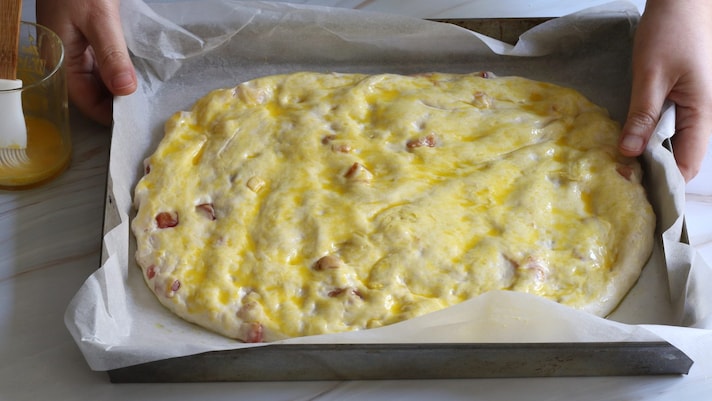
Cook in a preheated static oven at 430°F/220°C for approximately 40 minutes, monitoring the level of browning.
Cook in a preheated static oven at 430°F/220°C for approximately 40 minutes, monitoring the level of browning.
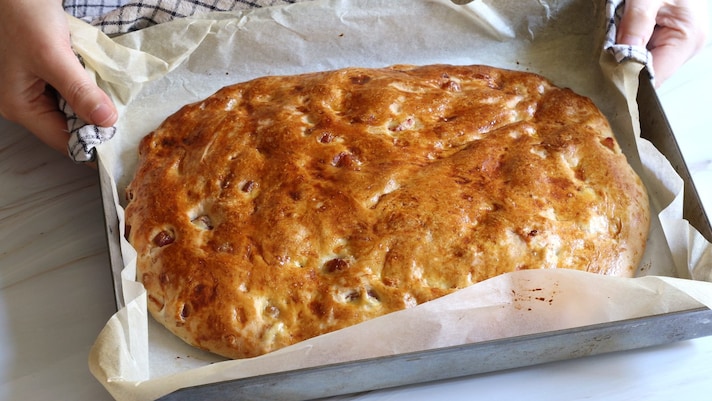
Remove the focaccia from the oven when it appears well-colored on the surface and evenly cooked on the base.
Remove the focaccia from the oven when it appears well-colored on the surface and evenly cooked on the base.

Enjoy it as you please!
Enjoy it as you please!
;Resize,width=767;)
